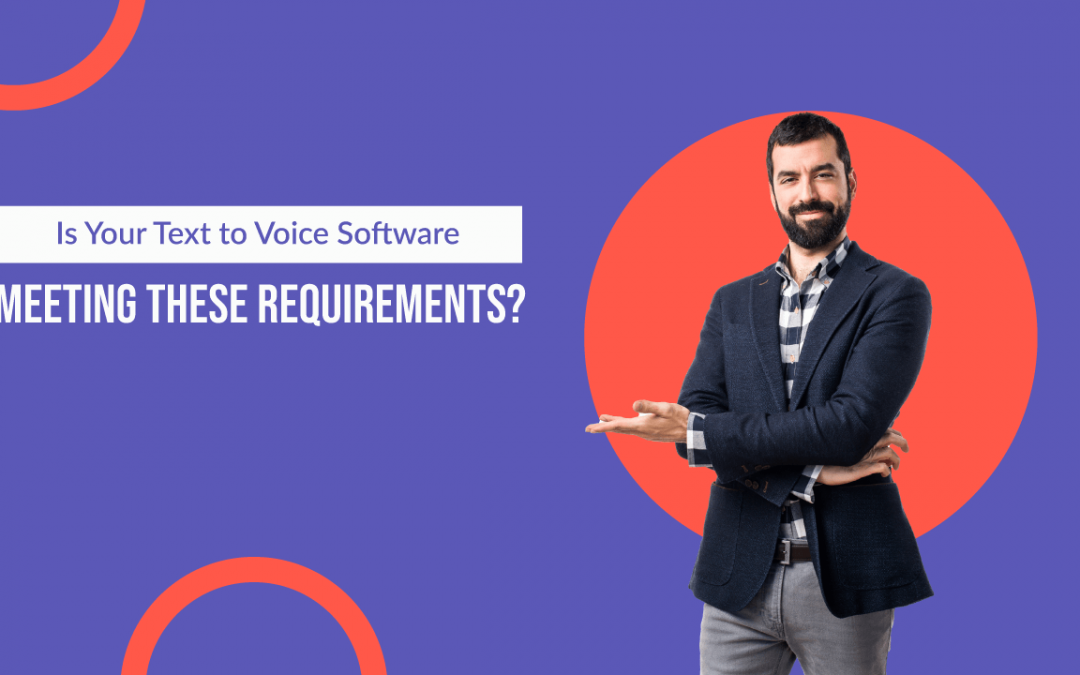With the ever-growing popularity of text to voice software solutions, it’s no wonder that an increasing number of companies are looking to incorporate this technology into their customer service arsenal. TTS can be used in a variety of customer service scenarios, from automated phone systems to virtual assistants.
When considering a text to voice software solution for your business, there are a few key requirements that you should keep in mind in order to ensure that the software meets your needs. In this article, we’ll take a look at some of the most important requirements for text to voice software.
The Requirements of a Good Text to Voice Software
To produce intelligent sounding synthetic speech, AI voice software must be able to understand the context of the sentence. This requires the ability to break down the sentence into its component parts and assign a meaning to each word. The meaning of a word can be determined by its position in the sentence, its relationship to other words in the sentence, and the way it is used in the sentence.
In addition, text-to-speech software must be able to pronounce words correctly. This involves understanding the rules of phonetics and applying them to the correct pronunciation of each word. Text-to-speech software must also be able to inflect words correctly.
Inflection is the process of changing a word to indicate its grammatical function in a sentence. For example, the word “walk” is inflected as “walks” when it is used as a verb and as “walked” when it is used as a past tense verb.
Finally, text-to-speech software must be able to generate prosody. Prosody is the rhythm, intonation, and stress of speech. It is what gives speech its musical quality and makes it sound natural. Without prosody, speech sounds robotic and monotonous.
When choosing text-to-speech software, it is important to consider the needs of the individual user and what features will be most helpful. Text-to-speech software can be expensive, so it is important to make sure that the features you need are included in the price. Some things you may want to consider include the following:
- What languages do you need?
- Do you need a male or female voice?
- What age group is your target audience?
- Do you want the software to be able to translate text into speech or just read it aloud?
- Do you need the software to be able to read specific file types, such as PDFs or eBooks?
- What kind of interface do you prefer?
Text to Voice Software Can Benefit Everyone!

As we know, text to voice software is a type of assistive technology that reads digital text aloud. The use of text-to-speech software can offer a number of benefits for users.
- It can be used to support people who struggle with reading, including those with dyslexia, low literacy, or visual impairments. Text-to-speech software can provide much needed support in reading and understanding the written language.
- Individuals who are blind or have low vision can use text-to-speech software to have text read aloud to them, which can aid in their ability to access and comprehend textual information.
- TTS software can be used to support people who want to listen to text instead of reading it, such as when they are driving or doing other tasks.
- In addition, text-to-speech software can be used by anyone as a tool for proofreading written text, as it can help to identify errors that might otherwise be missed. It can also be used to create audio files of digital text for listening on a mobile device or MP3 player. You can simply convert text into an mp3 file.
Conclusion
While there is a lot of text to voice software on the market that can provide a basic level of accessibility, it is important to remember that not all software is created equal. If you are looking for the best software with a natural-sounding voice, plenty of features, and support for multiple languages, then may want to consider Speechelo!
